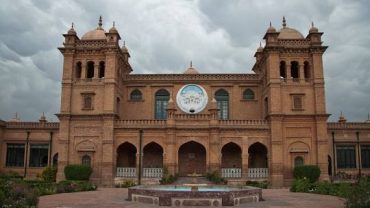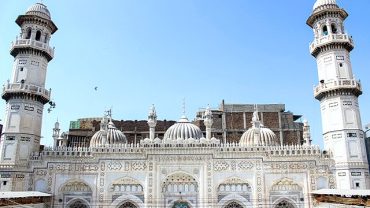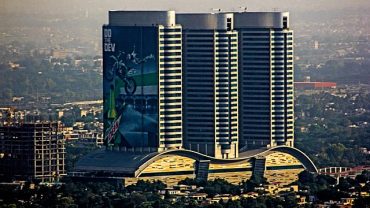The Quaid-e-Azam’s Mausoleum, also known as Mazar-e-Quaid, is not only one of Karachi’s most iconic historical landmarks but also a deeply emotional and culturally significant site for Pakistanis. This mausoleum serves as the final resting place of Muhammad Ali Jinnah, the founder and first Governor-General of Pakistan. Located in the heart of the city, in the lush and tranquil surroundings of Mauzam-e-Quaid Park, the mausoleum stands as a symbol of Pakistan’s birth and the enduring legacy of its founder.
What to Expect:
Upon arriving at the Quaid-e-Azam’s Mausoleum, visitors are greeted by the grandeur of the monument—a large, white marble structure that stands tall against the Karachi skyline. The mausoleum’s distinctive dome is an example of Islamic architecture, blending modernist and traditional designs, creating a striking visual contrast with the green spaces surrounding it. The peaceful ambiance of the site makes it an ideal location for reflection and admiration.
The tomb is flanked by a beautifully landscaped garden, with pathways and benches where visitors can sit and contemplate. The entire structure is meticulously maintained, and the surrounding area is a serene escape from the bustling city. Visitors can witness the changing of the guard ceremony at regular intervals, which adds to the solemnity and significance of the site. The guards stand in a ceremonial posture, in honor of the founder, and contribute to the historic feel of the mausoleum.
Inside the mausoleum, visitors can explore a museum that provides a deeper understanding of Jinnah’s life, struggles, and his contribution to the creation of Pakistan. The museum houses various exhibits, including his personal items such as clothing, belongings, and photographs. Additionally, it showcases documents and memorabilia from Pakistan’s independence movement, offering visitors a tangible connection to the historical journey of the country. A visit to the mausoleum is an opportunity to reflect on the remarkable leadership of Muhammad Ali Jinnah and his vision for Pakistan.
Best Time to Visit:
To experience the mausoleum at its best, it’s recommended to visit early in the morning or late in the afternoon. These times allow visitors to enjoy the cooler weather, especially considering Karachi’s warm climate. Early visits provide the opportunity to witness the peaceful atmosphere before the crowds arrive, while the late afternoon offers the chance to see the changing of the guard ceremony as the sun sets.
The changing of the guards is a significant and moving ritual, making it one of the most memorable moments of the visit. As part of the military protocol, the guards exchange posts with precision and discipline, demonstrating the respect given to the founder of the nation.
Visiting Tips:
- Dress modestly: As this is a national monument and a religious site, visitors should dress conservatively to show respect.
- Guided Tours: If you want to learn more about the history of the mausoleum and Jinnah’s life, consider hiring a local guide. They provide fascinating insights into the site’s significance.
- Photography: Photography is allowed at the mausoleum, but be mindful of the solemn atmosphere and respect the rules of the site. Some areas may restrict the use of flash photography.
- Security: Due to the significance of the site, security is tight. Be prepared to go through security checks before entering the mausoleum.
Whether you’re a history enthusiast, a local looking to honor the nation’s founder, or a traveler interested in experiencing Karachi’s rich cultural heritage, the Quaid-e-Azam’s Mausoleum is a must-visit destination that beautifully captures the spirit and pride of Pakistan.





Comment (0)